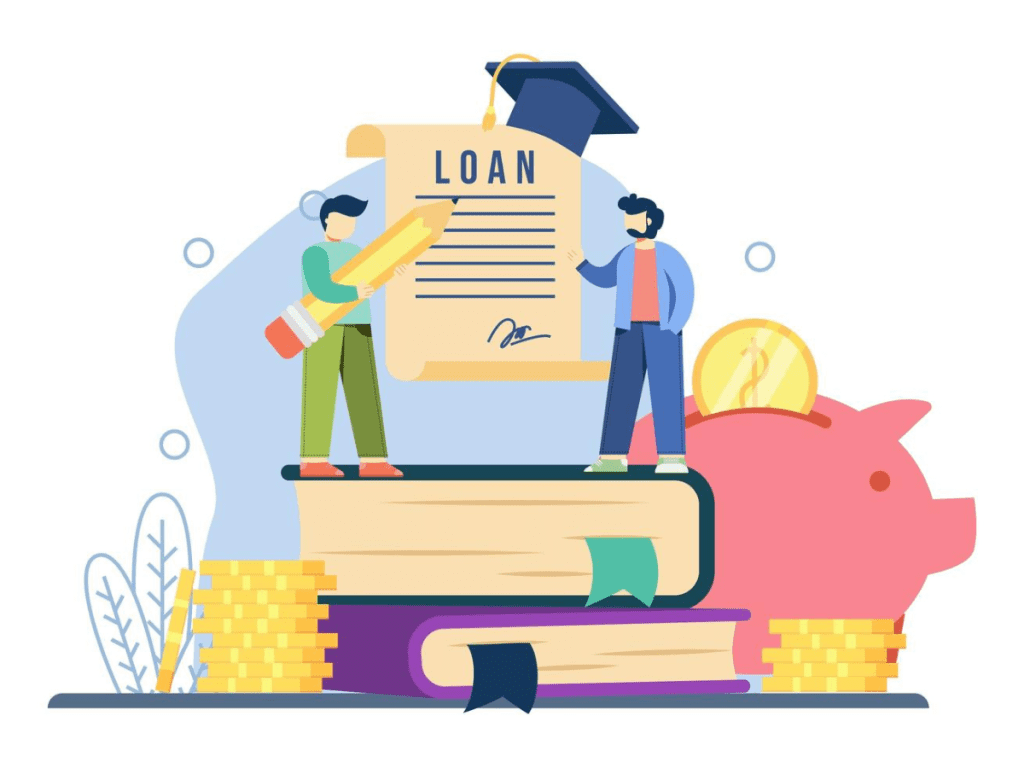introduction
Creating a loan repayment plan is essential for managing your debt, staying on top of payments, and working toward financial freedom. Whether you’re dealing with student loans, personal loans, or credit card debt, a well-structured repayment strategy can help you pay off your loans efficiently, reduce interest costs, and prevent missed payments. Here’s how to create a loan repayment plan that works for you.
1. Assess Your Current Debt Situation
The first step in creating an effective repayment plan is to understand the total debt you’re facing. This includes:
- Total Amount Owed: Add up the balances of all your loans.
- Interest Rates: Note the interest rates for each loan. Higher interest rates typically cost more over time.
- Repayment Terms: Understand the length of time and payment schedule for each loan.
- Monthly Payments: Identify the minimum monthly payment required for each loan.
Having a clear view of your debt will help you prioritize loans and decide how to allocate your funds effectively.
2. Set a Repayment Goal
Determine how quickly you want to pay off your loans. Having a clear goal helps keep you motivated. Consider the following:
- Short-Term Goals: Aim to pay off smaller loans first, or aggressively pay down high-interest loans.
- Long-Term Goals: Decide whether you want to pay off all loans within a specific number of years or focus on one loan at a time.
Setting a timeline will help you understand how much you need to pay each month to reach your goal.
3. Choose a Repayment Strategy
There are two common repayment strategies:
1. Debt Avalanche Method
- How It Works: Focus on paying off the loan with the highest interest rate first while making minimum payments on other loans.
- Advantages: Saves you the most money in interest over time.
- Best For: People who want to reduce the total cost of their debt and are motivated by long-term savings.
2. Debt Snowball Method
- How It Works: Focus on paying off the smallest loan balance first while making minimum payments on others. Once the smallest debt is paid off, move to the next smallest, and so on.
- Advantages: Provides psychological momentum and a sense of accomplishment as each loan is paid off.
- Best For: People who need motivation and prefer quick wins.
Both methods are effective; choose the one that best fits your financial personality and goals.
4. Create a Realistic Budget
A solid budget is key to sticking with your loan repayment plan. Make sure your budget includes:
- Income: Include all sources of income (salary, freelance work, passive income).
- Fixed Expenses: Account for rent/mortgage, utilities, insurance, and other monthly costs.
- Variable Expenses: Include groceries, transportation, entertainment, etc.
- Loan Payments: Set aside money for your minimum payments and any extra payments you plan to make.
Track your spending carefully to ensure that you’re not overspending in areas like dining out or entertainment. Adjust your lifestyle as necessary to prioritize debt repayment.
5. Prioritize High-Interest Loans
Focus on paying off loans with the highest interest rates first (if using the debt avalanche method). This is particularly important if you have credit card debt or high-interest personal loans. Reducing high-interest debt quickly minimizes the total amount you’ll pay in the long run.
6. Consider Loan Refinancing or Consolidation
If you have multiple loans, consolidating or refinancing them can simplify your repayment and lower your interest rates.
- Refinancing: Taking out a new loan with a lower interest rate to pay off existing loans. You’ll need good credit to qualify for the best rates.
- Consolidation: Combining federal loans into a single loan with one payment and potentially extending the repayment term. Note that consolidation may limit some borrower protections and forgiveness options for federal loans.
Before proceeding with either option, evaluate the pros and cons based on your financial goals and loan types.
7. Set Up Automatic Payments
Setting up automatic payments ensures you never miss a payment and helps you avoid late fees. Many lenders offer a small interest rate discount (e.g., 0.25%) if you enroll in autopay. This also helps you stay consistent with your repayment plan and reduce the temptation to skip payments.
8. Allocate Windfalls or Bonuses to Loans
If you receive any unexpected income, such as a tax refund, work bonus, or gift, consider putting it toward your loan repayment. Even a small windfall can make a difference in reducing the principal balance and speeding up repayment.
9. Track Your Progress Regularly
Monitoring your progress helps you stay on track and motivated. Use a spreadsheet, loan calculator, or budgeting app to track the balance, interest, and repayment schedule for each loan. Celebrate milestones such as paying off a loan or reaching a significant reduction in total debt.
10. Review and Adjust Your Plan
Life changes, and so should your repayment plan. Regularly review your loan balances, interest rates, and repayment goals. If your financial situation improves, consider increasing your payments to pay off loans faster. Conversely, if you face financial hardships, contact your lender to explore forbearance, deferment, or income-driven repayment options.
11. Consider Loan Forgiveness Programs (for Federal Loans)
If you have federal student loans, you may qualify for loan forgiveness programs, such as:
- Public Service Loan Forgiveness (PSLF): For those working in public service fields (e.g., government, nonprofit).
- Income-Driven Repayment (IDR) Forgiveness: For those on income-driven plans after 20–25 years of qualifying payments.
These programs can significantly reduce your loan burden, but they require long-term commitment and careful tracking of eligible payments.
12. Stay Consistent and Be Patient
Paying off loans takes time and discipline. The key to success is consistency—making regular payments, sticking to your budget, and staying focused on your long-term financial goals. Avoid getting discouraged by the size of your debt; each payment brings you one step closer to financial freedom.
Conclusion
Creating a loan repayment plan is a critical step toward taking control of your finances. By understanding your debt, setting a realistic budget, and selecting an appropriate repayment strategy, you can pay off your loans more quickly and reduce the amount of interest you pay. Regularly tracking your progress and adjusting your plan as needed will help you stay on course toward a debt-free future.

